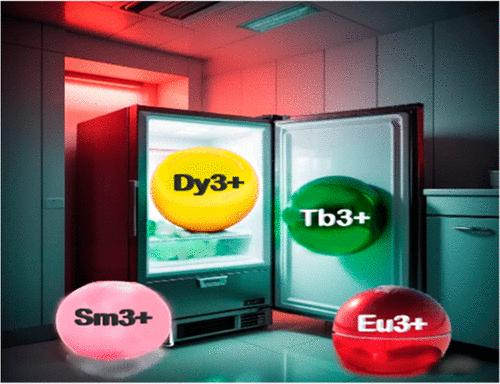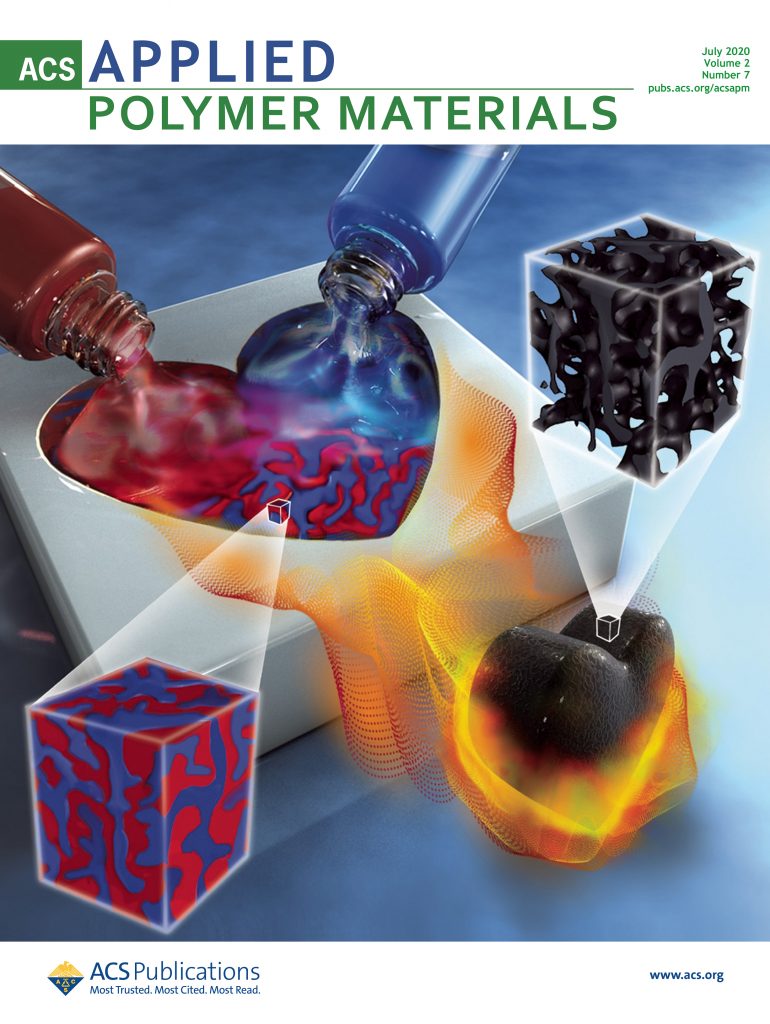基于配位化合物的发光温度计系统 Dy3+/Eu3+ 和 Tb3+/Sm3+:已获批准的 Tb3+/Eu3+ 的新配对?
IF 4.4
2区 化学
Q2 MATERIALS SCIENCE, MULTIDISCIPLINARY
引用次数: 0
摘要
这项工作全面研究了六种结构为[Ln(MeDPQ)2Cl3](Ln3+ = Sm3+、Eu3+、Gd3+、Tb3+、Dy3+ 和 Y3+;MeDPQ─2-甲基二吡啶-[3,2-f:2′,3′-h]-喹喔啉)的新配合物,这些配合物具有高达 446 °C 的良好热稳定性。用第二个 Ln3+ 离子对 Sm3+、Tb3+、Gd3+ 和 Dy3+ 进行统计置换,得到了[Ln1-xLn′x(MeDPQ)2Cl3]固溶体,这种固溶体具有随温度变化的发光特性。在[Tb1-xEux(MeDPQ)2Cl3]成分中,当 x(Eu3+)=0.01、0.05 和 0.1 时,最大相对热灵敏度 Sr 值分别为 3.77% K-1、3.97% K-1 和 3.97% K-1。[Dy1-xEux(MeDPQ)2Cl3]和[Tb1-xSmx(MeDPQ)2Cl3]也显示出显著的性能。对于一对 Dy3+-Eu3+,在 x(Eu) = 0.01、0.05 和 0.1 时,Sr 值分别为 3.88%K-1、3.91%K-1 和 3.80% K-1。对于 Sm3+-Tb3+ 对,x(Sm) = 0.9 和 0.1 时的 Sr 值分别为 3.28% K-1 和 3.82% K-1。成分[Gd0.8Tb0.18Eu0.02(MeDPQ)2Cl3]的最大热敏性 Sr 值为 4.11% K-1。此外,测温性能的模式与能量传递效率 Tb3+ → Eu3+、Dy3+ → Eu3+ → Dy3+ 和 Tb3+ → Sm3+ 有关,因为在研究范围内,这一特性与温度密切相关。本文章由计算机程序翻译,如有差异,请以英文原文为准。

Luminescent Thermometer Systems Dy3+/Eu3+ and Tb3+/Sm3+ Based on Coordination Compounds: New Pairs to the Approved Tb3+/Eu3+?
This work addresses a comprehensive study of six new complexes of the constitution [Ln(MeDPQ)2Cl3] (Ln3+ = Sm3+, Eu3+, Gd3+, Tb3+, Dy3+, and Y3+; MeDPQ─2-methyldipyrido-[3,2-f:2′,3′-h]-quinoxaline) with good thermal stability up to 446 °C. Statistical substitution of Sm3+, Tb3+, Gd3+, and Dy3+ with a second Ln3+ ion led to [Ln1–xLn′x(MeDPQ)2Cl3] solid solutions, which exhibit temperature-dependent luminescent properties. Their visible emission and intensity ratios of transitions vary with temperature in the range of 253–353 K. In the case of the composition [Tb1–xEux(MeDPQ)2Cl3], the maximum relative thermal sensitivity Sr values were determined as 3.77% K–1, 3.97% K–1, and 3.97% K–1 for x(Eu3+) = 0.01, 0.05, and 0.1, respectively. The compositions [Dy1–xEux(MeDPQ)2Cl3] and [Tb1–xSmx(MeDPQ)2Cl3] also showed significant performance. For the pair Dy3+–Eu3+, the Sr values were determined as 3.88%K–1, 3.91% K–1, and 3.80% K–1 for x(Eu) = 0.01, 0.05, and 0.1, respectively. For the pair Sm3+–Tb3+, the Sr values are 3.28% K–1 and 3.82% K–1 for x(Sm) = 0.9 and 0.1, respectively. The largest thermal sensitivity value Sr of 4.11% K–1 was achieved for the composition [Gd0.8Tb0.18Eu0.02(MeDPQ)2Cl3]. In addition, patterns of thermometric performance are bound to the energy transfer efficiency Tb3+ → Eu3+, Dy3+ → Eu3+ → Dy3+, and Tb3+ → Sm3+, as this characteristic is strongly temperature-dependent in the studied range.
求助全文
通过发布文献求助,成功后即可免费获取论文全文。
去求助
来源期刊

ACS Applied Polymer Materials
Multiple-
CiteScore
7.20
自引率
6.00%
发文量
810
期刊介绍:
ACS Applied Polymer Materials is an interdisciplinary journal publishing original research covering all aspects of engineering, chemistry, physics, and biology relevant to applications of polymers.
The journal is devoted to reports of new and original experimental and theoretical research of an applied nature that integrates fundamental knowledge in the areas of materials, engineering, physics, bioscience, polymer science and chemistry into important polymer applications. The journal is specifically interested in work that addresses relationships among structure, processing, morphology, chemistry, properties, and function as well as work that provide insights into mechanisms critical to the performance of the polymer for applications.
 求助内容:
求助内容: 应助结果提醒方式:
应助结果提醒方式:


